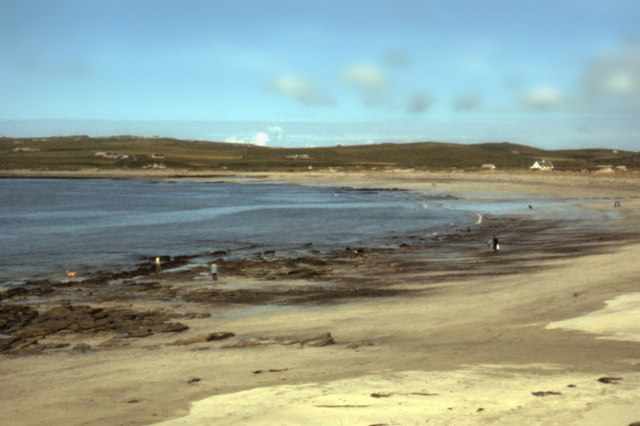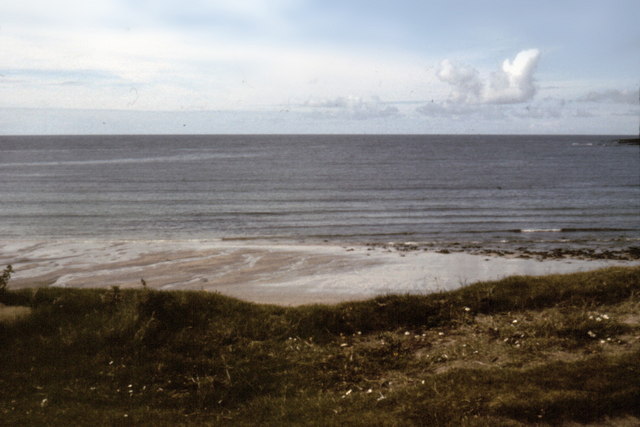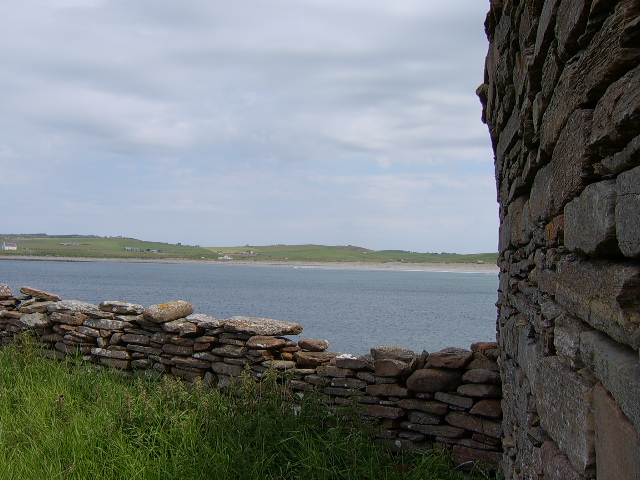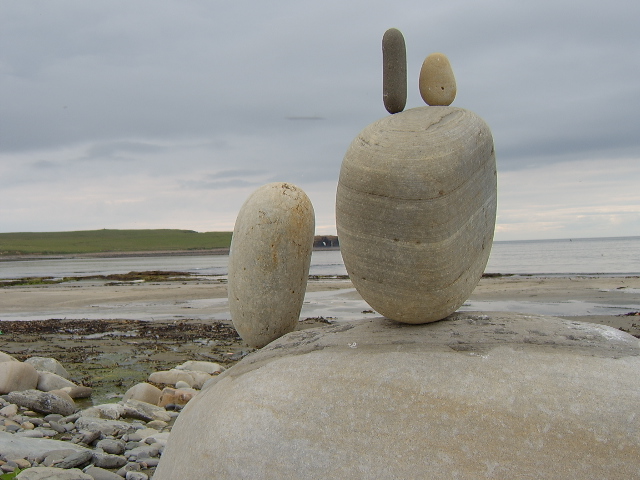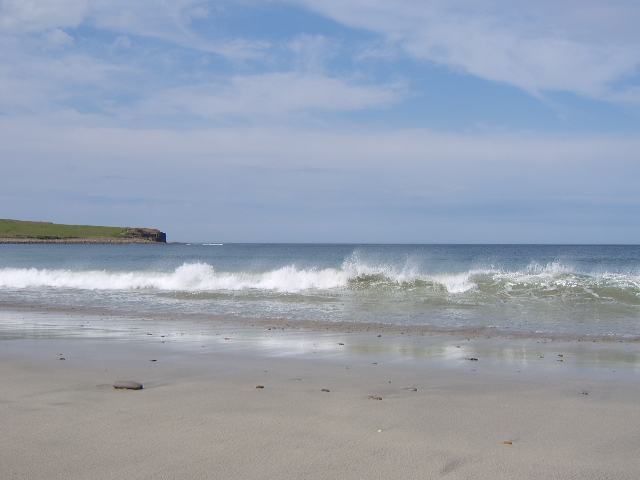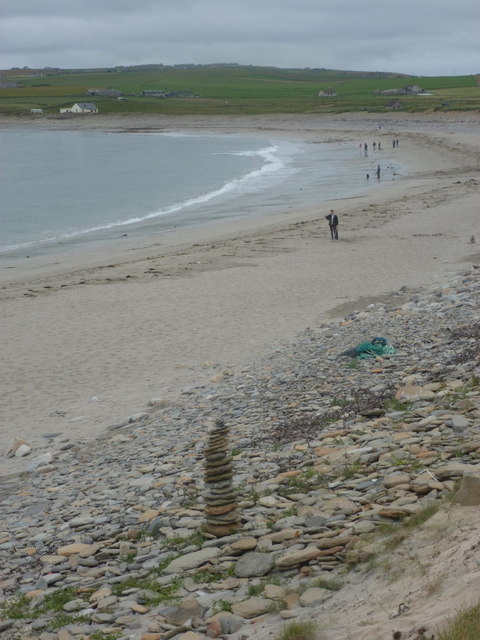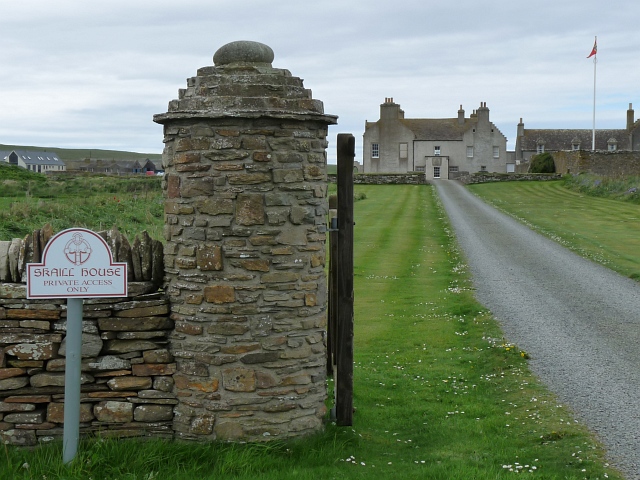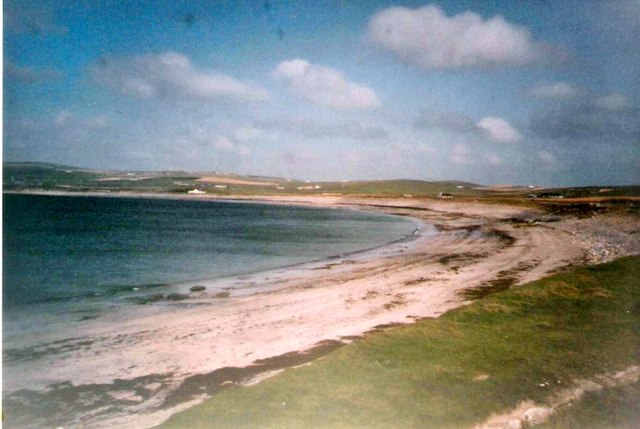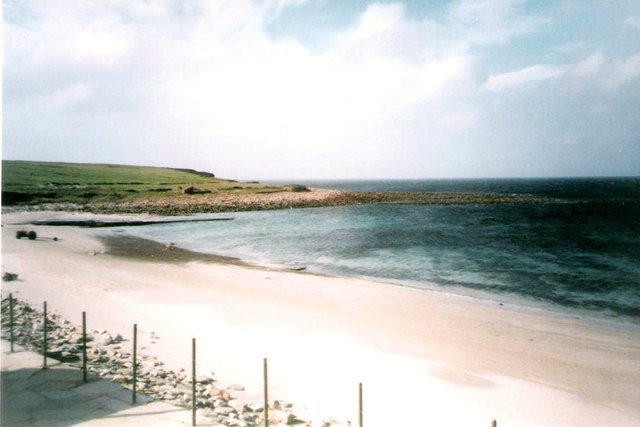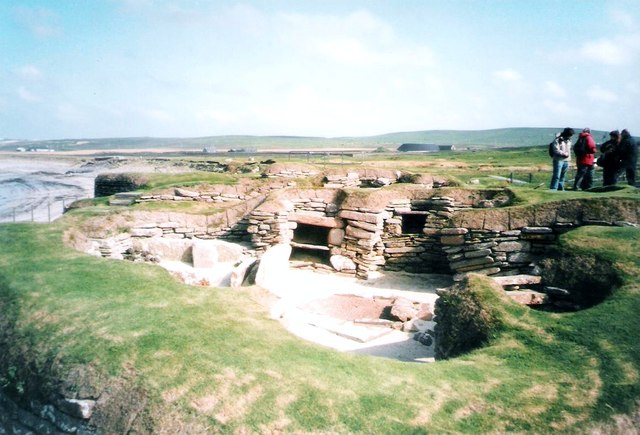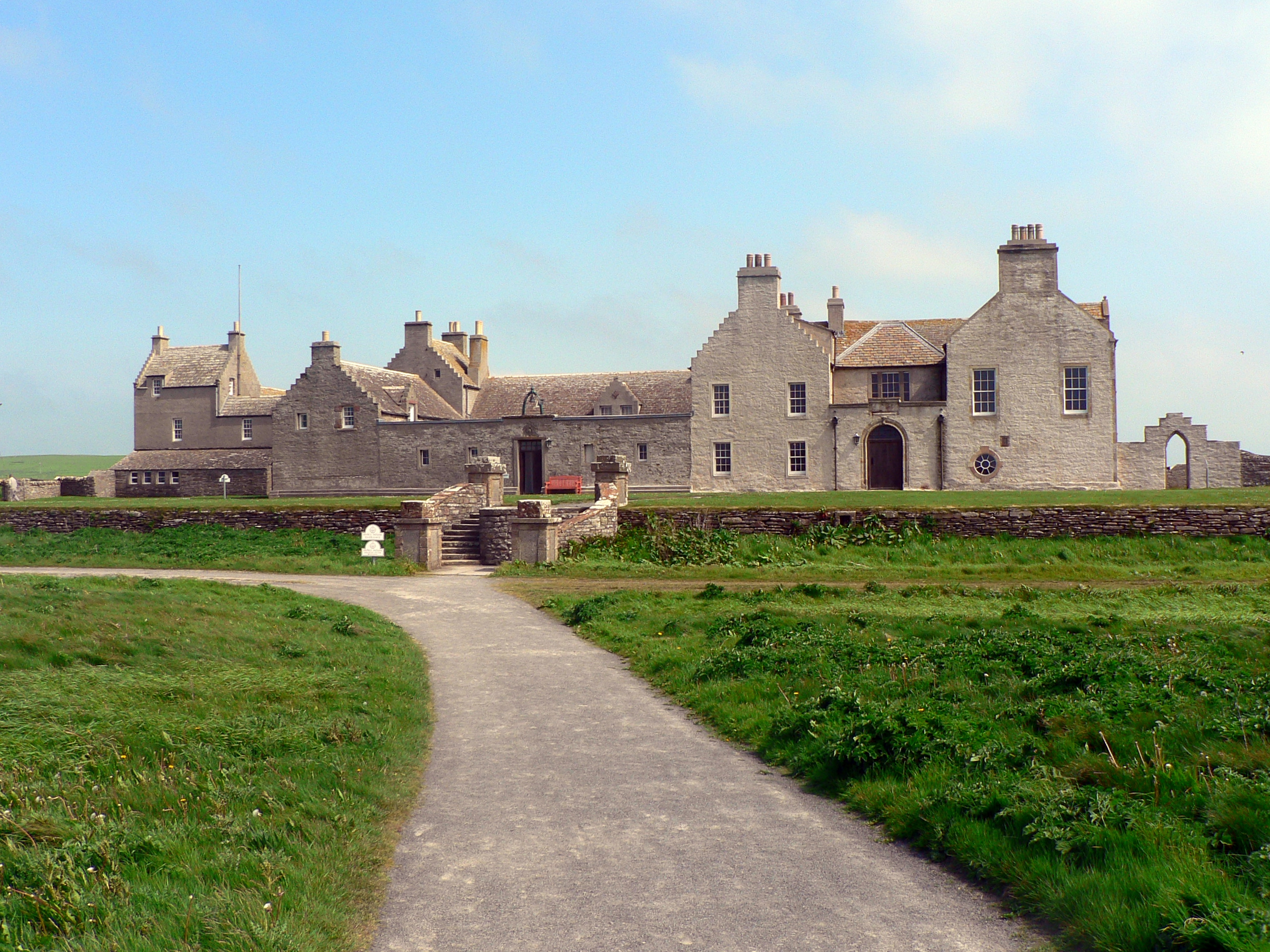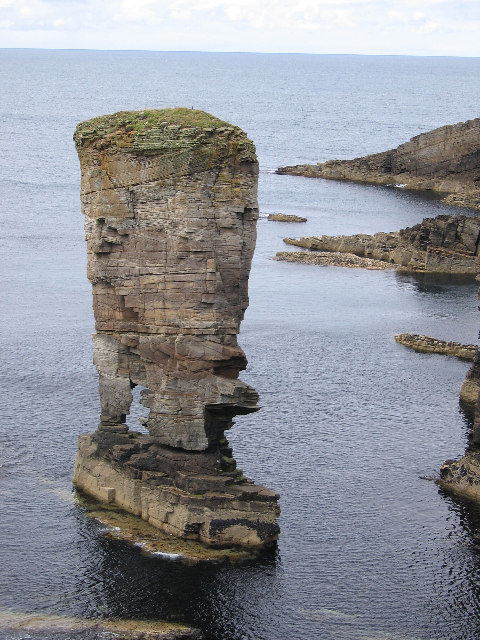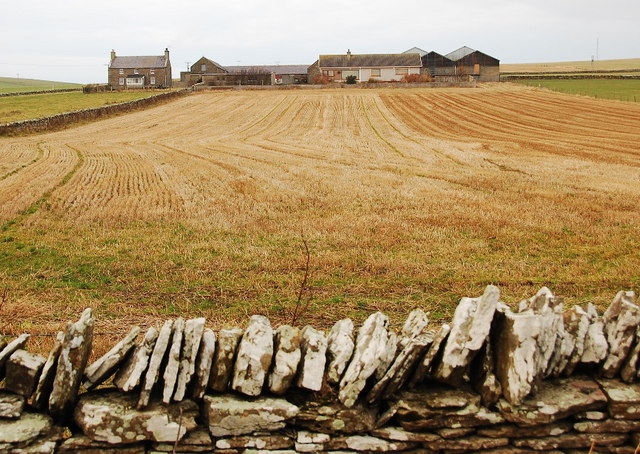Yettna Geo
Coastal Feature, Headland, Point in Orkney
Scotland
Yettna Geo
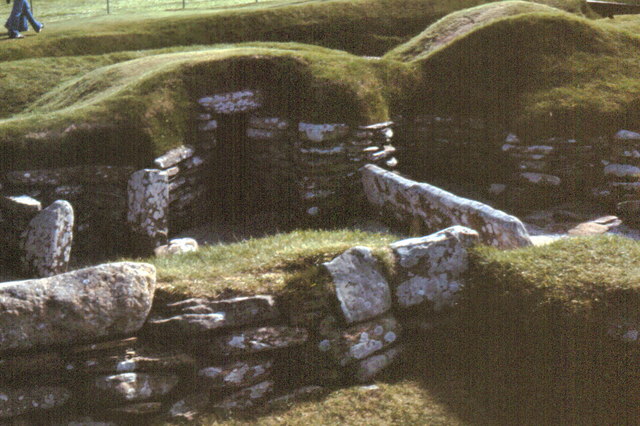
Yettna Geo is a prominent coastal feature located on the west coast of the island of Orkney, Scotland. It is classified as a headland, also known as a point, due to its distinct and protruding shape that extends into the sea. The geo is situated near the village of Stromness, approximately 15 kilometers southwest of Kirkwall, the capital of Orkney.
Yettna Geo is characterized by its rugged and dramatic cliffs, which reach heights of up to 50 meters in some areas. These cliffs are composed of layers of sedimentary rock, showcasing a variety of colors and textures. The geo is also home to a diverse range of flora and fauna, including seabirds, such as fulmars and kittiwakes, which nest on the ledges of the cliffs.
The location of Yettna Geo offers breathtaking panoramic views of the surrounding coastline, including the nearby islands of Hoy and Graemsay. Its exposed position makes it susceptible to strong winds and rough seas, creating a dynamic and ever-changing environment.
Visitors to Yettna Geo can enjoy walking along the cliff-top paths, taking in the stunning scenery and observing the abundant wildlife. The geo is a popular destination for birdwatchers, geologists, and nature enthusiasts, who are drawn to its unique geological formations and natural beauty.
Overall, Yettna Geo in Orkney is a captivating coastal feature that showcases the ruggedness and natural splendor of the Scottish coastline.
If you have any feedback on the listing, please let us know in the comments section below.
Yettna Geo Images
Images are sourced within 2km of 59.047435/-3.3557165 or Grid Reference HY2218. Thanks to Geograph Open Source API. All images are credited.

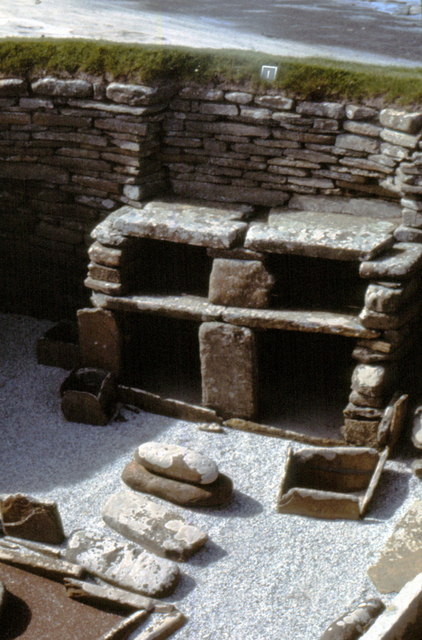
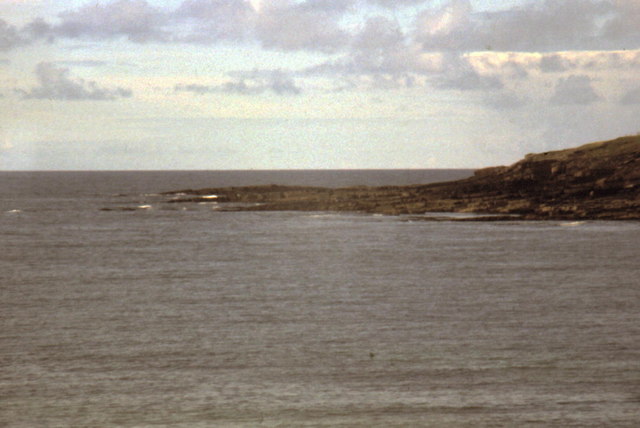
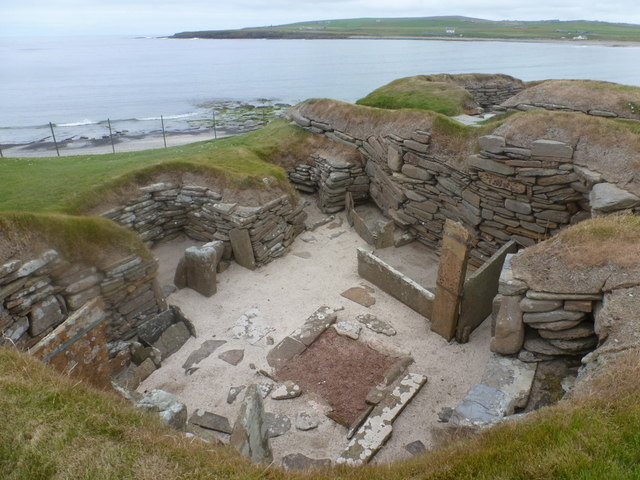
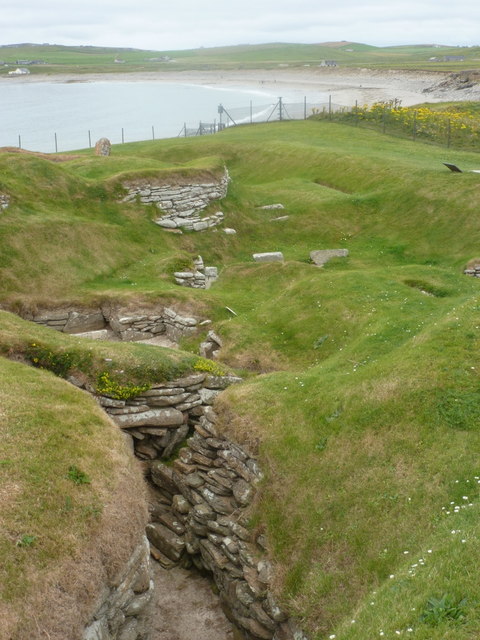
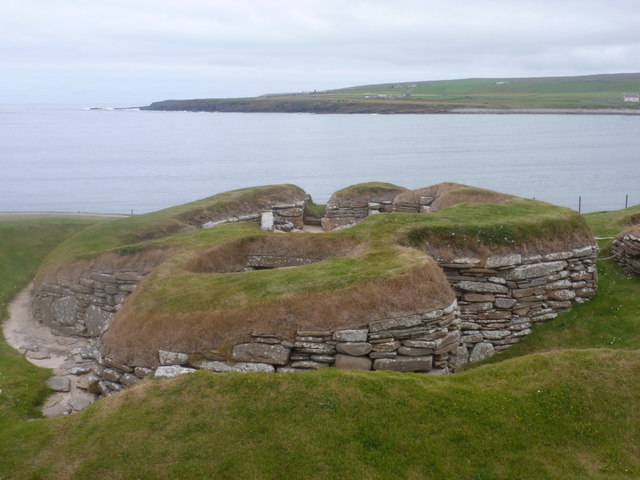
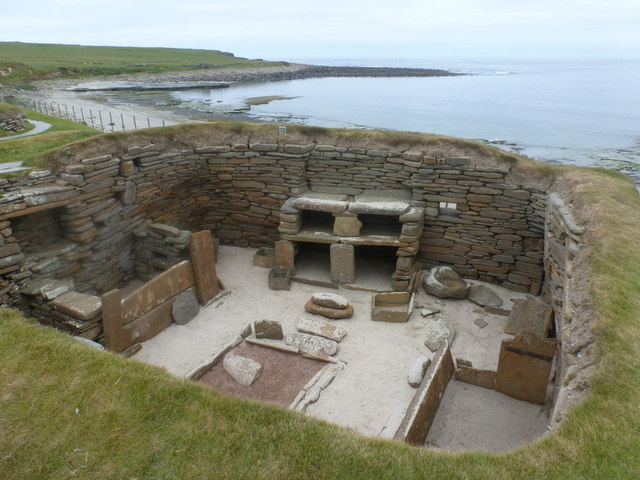
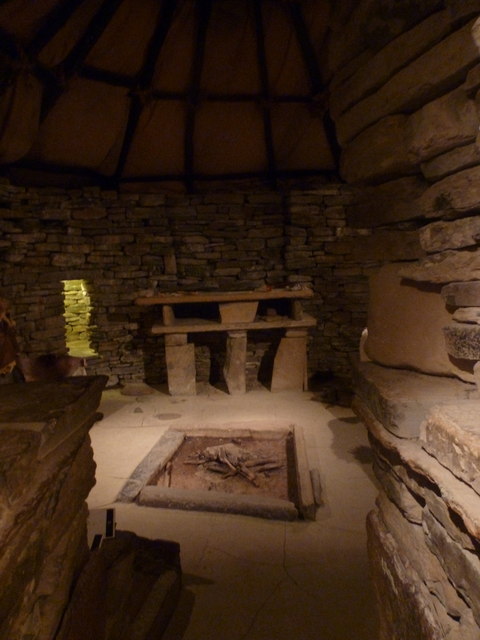
Yettna Geo is located at Grid Ref: HY2218 (Lat: 59.047435, Lng: -3.3557165)
Unitary Authority: Orkney Islands
Police Authority: Highlands and Islands
What 3 Words
///husbands.willing.assess. Near Sandwick, Orkney Islands
Nearby Locations
Related Wikis
Skara Brae
Skara Brae is a stone-built Neolithic settlement, located on the Bay of Skaill on the west coast of Mainland, the largest island in the Orkney archipelago...
Skaill House
Skaill House is a historic manor house in Sandwick parish on Mainland, the largest of the Orkney Islands, Scotland. The house overlooks the neolithic site...
Bay of Skaill
The Bay of Skaill (from Old Norse Bugr Skála) is a small bay on the west coast of the Orkney Mainland, Scotland. == Visitor attractions == Bay of Skaill...
Broch of Borwick
The Broch of Borwick is an Iron Age broch located on Mainland, Orkney, Scotland (grid reference HY22411678). It is a scheduled monument. == Location... ==
Loch of Skaill
The Loch of Skaill is a small somewhat triangular, freshwater loch in the parish of Sandwick, Orkney on Mainland Orkney, Scotland. It lies 0.5 mi (0.80...
Yesnaby
Yesnaby is an area in Sandwick, on the west coast of Orkney Mainland, Scotland, south of Skara Brae. It is renowned for its spectacular Old Red Sandstone...
Sandwick, Orkney
Sandwick (Old Norse: Sandvík; Norn: Sandvik) is a parish on the west coast of Mainland, Orkney, Scotland, 4 miles (6.4 km) north of Stromness.The parish...
Voy
Voy is a settlement in the Orkney Islands of the north of Scotland. Voy is within the parish of Sandwick. The settlement is 3 miles (5 kilometres) north...
Have you been to Yettna Geo?
Leave your review of Yettna Geo below (or comments, questions and feedback).
